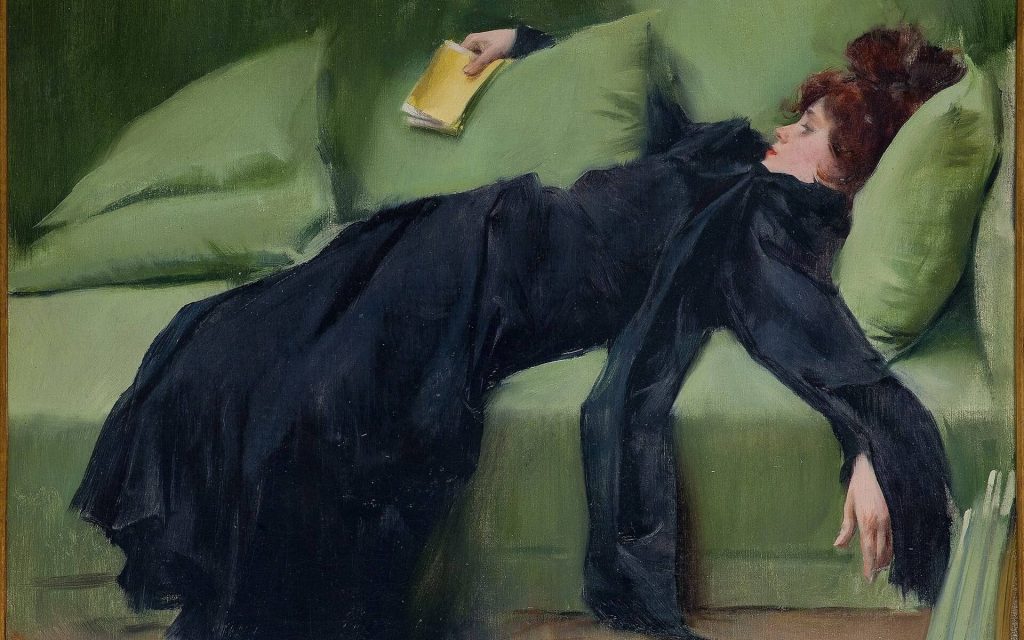
In the Ashmolean, look out for a reclining woman reading a book. She may be wearing a black dress, but she is surrounded by vivid bursts of colour: a rich green sofa, a yellow-jacketed book, not to mention her warmly coloured lips and copper-coloured hair. It’s a portrait of the Parisian model Madeleine Boisguillaume, painted in 1899 by the Spanish artist Ramon Casas (Decadent Young Woman, After the Dance), and included in the Oxford museum’s upcoming exhibition Colour Revolution: Victorian Art, Fashion & Design.
Yet if you were to imagine a similar scene set in the exact same year, but across the Channel, it would surely be cast in more sombre shades. For that we can partly blame the woman whose name that British era bears: Queen Victoria, who went into mourning for the death of her husband in 1861 and continued to wear black until her own death in 1901.
Another culprit for the belief that the Victorians lived a monochromatic existence is the black-and-white photograph. Although people are aware colour photography was not commercially available in the 19th century, there’s still a lingering perception that all Victorian life was bleak and smoggy.
In 2020, the Charles Dickens Museum in London mounted an exhibition by photographer Oliver Clyde of “colourised” photographs of Dickens (who also happens to be my great-great-great-grandfather). This was achieved by taking photographs of several of my male Dickens cousins, in order to create a realistic skin tone, and, by researching, with the museum’s curators, to find out what colour Dickens’s clothing had been (courtesy of letters, diaries and tailors’ bills). The first time I saw the photos, I found it unsettling to see my ancestor looking like someone I might have grown up knowing. They made him come alive in a way that few actual images of the time manage to do. Here was a person so well known from black-and-white images as the archetypal Victorian novelist, suddenly looking like some eccentric dandy who might have an Instagram account today.
It’s time to stop seeing a period of British history that contained so many groundbreaking artists and designers as lacking in colour. The Ashmolean’s exhibition seeks to persuade us that our Victorian ancestors lived in just as colourful a world as their European neighbours at the time, and as we do today. […]
First published in The Telegraph on 17th September 2023. Read full article online.